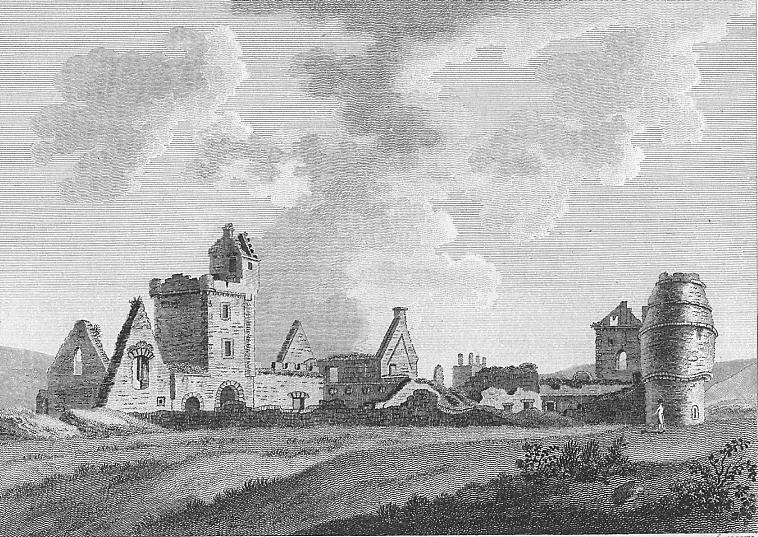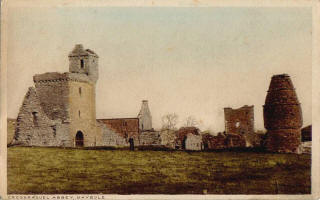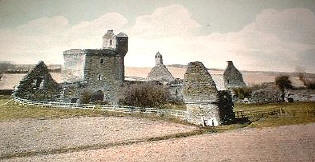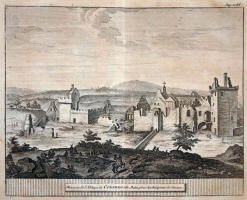 |
||
|
Cors Regal (Crosraguel) Abbey - Scotland Artist: Hooper; Engraver: Saprrow. From the original description: Crosraguel Abbey stands in Carrick, one of the subdivisions of the Shire of Air, and in the parish of Kirkoswald, two miles from Maybole. This was a Cluniac abbey, founded y Duncan, son of Gilbert, Earl of Carrick, in the year 1244, as we were informed by the Chartulary of Paisley. There is a charter of King Robert Bruce to this place, which he therein calls Croceragmer de Terra Dungrelach, given at Berwick the eighteenth year of his reign, and also confirmation of all the churches and lands granted to it by Duncan Neil Robert, his father. |
||
|
Crossraguel has been twice demolished. The first was by Henry Percy in 1307. It was he who held Turnberry Castle for Edward I., and whose outlying force was put to the sword by Bruce. Forced to decamp after this defeat, he took the poor revenge of burning the modest edifice of old Earl Duncan before he left. Rebuilt on a grander scale, the Abbey stood intact till the Reforming Leaders decreed its destruction in 1561. But even then it did not quite vanish. Abbot Quintin, backed up by his nephew, the Earl of Cassillis, refused to budge from his house. He lost no chance of showing his contempt for the new authorities, and tossed their order to pay over to them the third of his benefice into the fire; He lived in his half demolished Abbey, openly celebrating the Mass, as though the Reformers were a mere parcel of rioters. His bold example encouraged the monks to return to their former quarters, and as late as 1592, some of them were still living in the Abbey, being probably the latest monks in residence in Lowland Scotland. No doubt the errors of the Roman Catholic creed had something to do with the Reformation, but the main moving force was the ignorance, the indolence, the greed, and, above all, the profligacy of the monks. They sowed the wind, and they reaped the whirlwind. They were eating and drinking, marrying secretly, and giving in marriage openly, until, at last, the flood came and took them all away. As an old Scottish ballad writer observed:
|


